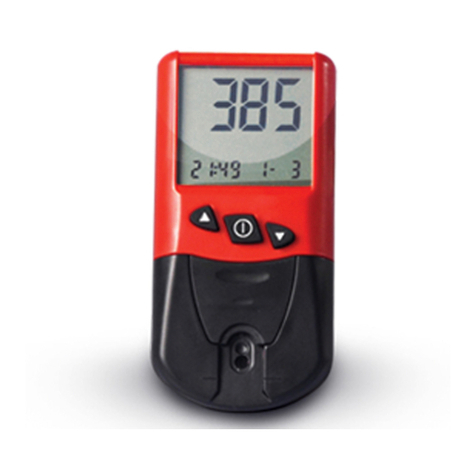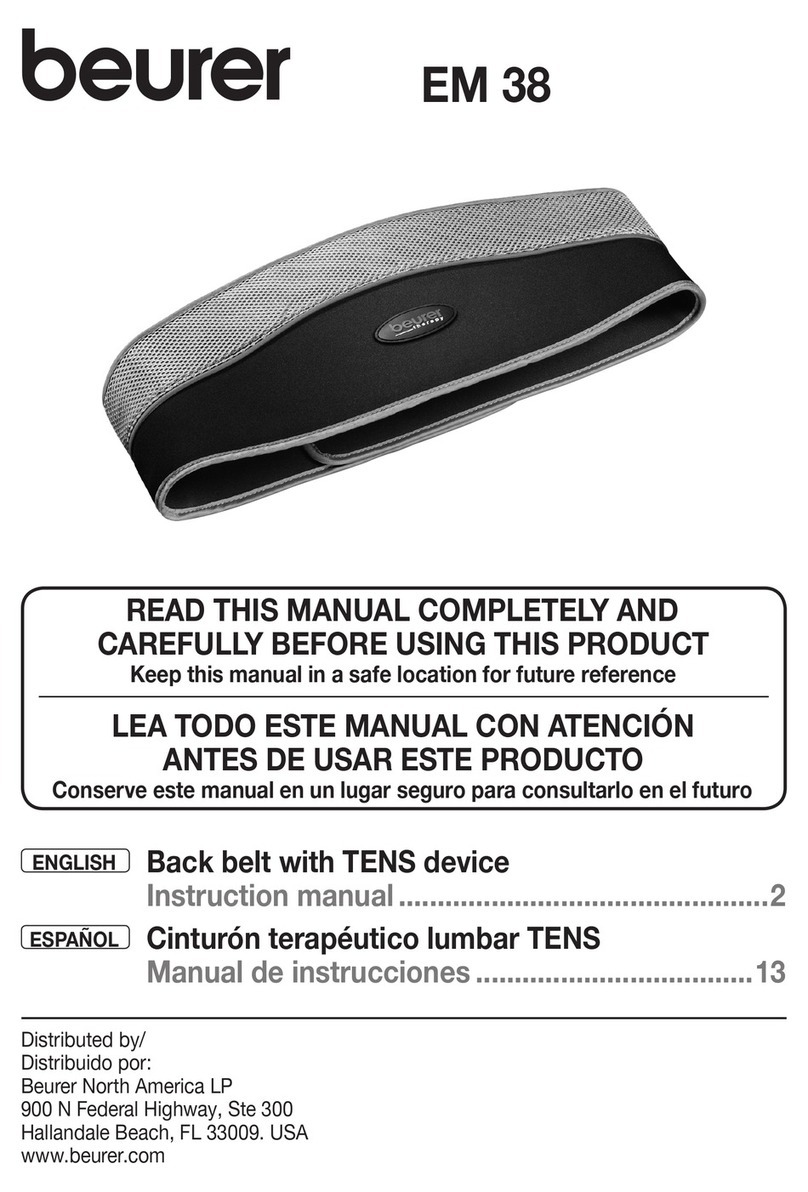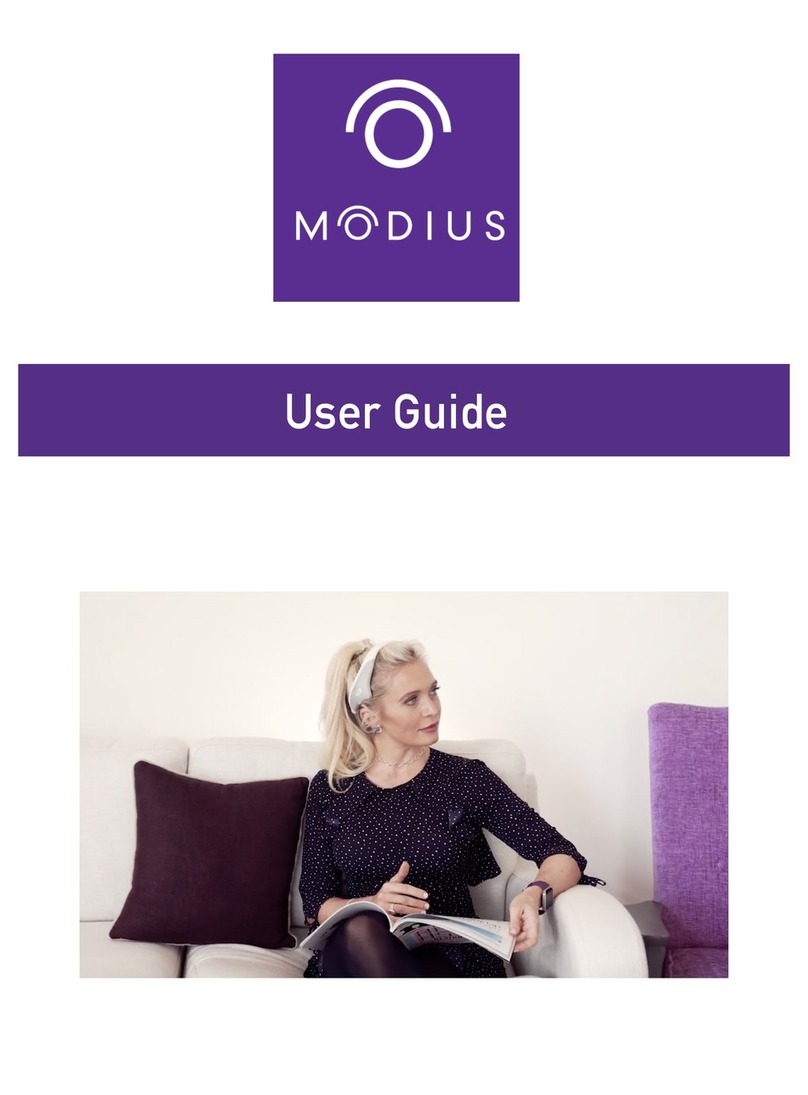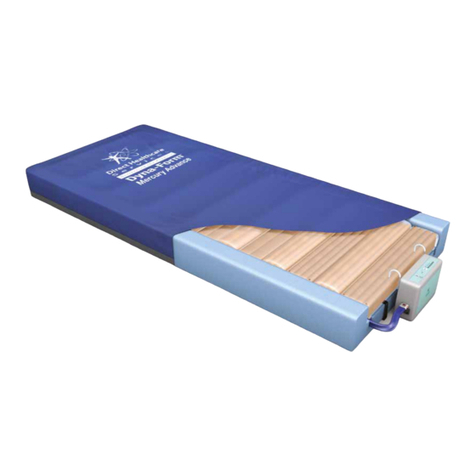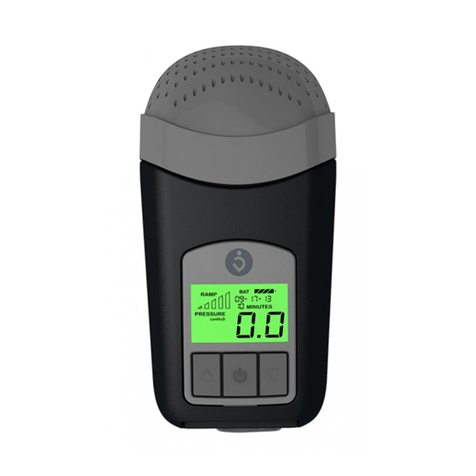Thinklabs One User manual

Thinklabs One User’s Manual

Table of Contents
Introduction
Welcome to Thinklabs Community……………………………………………………….………..Pg. 3
Stethoscope Features…………………………………………………………………….……………….Pg. 4
Optimal Use of your Thinklabs One……………………………………………………….……...Pg. 5
Package Contents…………………………………………………………………………….…………....Pg. 6
Rechargeable Battery
Battery Charging………………………………………………………………………………….……..….Pg. 8
Battery Charging Precautions…………………………………………………………….……..…..Pg. 9
Battery Level Indication…………………………………………………….…………………..…….Pg. 10
Operating The One
Controls and Display………………………………………………………………….…….….…………Pg. 7
Power On / Off……………………………………………………………….……………….…….…....Pg. 10
Volume Control………………………………………………………………………………...………....Pg. 11
Filter Selection……………………………………………………………………………….….….….….Pg. 12
Reading the Hz Scale………………………………………………………………………..……..….Pg. 13
Auto Shutoff Programming…………………………………………………….………...………...Pg. 15
1

Advanced Topics
Stethoscope Filters………………………………………………………………………...……..Pg. 12-14
Diaphragm Pressure & Frequency……………………………………………………...……...Pg. 16
Psychoacoustics & Volume…………………………………………………………………….…….Pg. 17
Thinklink & Connectivity………………………………………………………………………….Pg. 18-20
Maintenance
General Maintenance……………………………………………………………………..…………….Pg. 21
Headphone Maintenance………………………………………………………………………..…...Pg. 22
Diaphragm Cleaning & Removal…………………………………………………………..……..Pg. 23
Cleaning Inside the One………………………………………………………….……………….....Pg. 24
Additional Information
Quick Reference Guide………………………………………………………………..………………….Pg. 3
Troubleshooting………………………………………………………………………….…………..Pg. 25-29
Filters……………………………………………………………………………………….…………………...Pg. 30
Indications for Use/Caution………………………………………………………...……………...Pg. 31
Service & Warranty……………………………………………………………………………..……..Pg. 32
2

Welcome to the Thinklabs Community
Congratulations! You now own the revolutionary Thinklabs One - an electronic
stethoscope like no other. Welcome to the Thinklabs Community of clinicians,
researchers, educators and students who believe in quality in everything they do.
Quick Reference Guide
Design - Thinklabs One is designed with form and function intended for an era of
compact, efficient design; a stethoscope for the age of digital music and instant
communication. The design hides advanced technology and an elegantly simple
form.
Amplification - With over 100X amplification compared to a typical acoustic
stethoscope, One's small form hides an extraordinary power to reproduce heart
sounds with the punch of a rock drummer or a hip-hop track.
Audio Filter System - Multiple filters give you control over the sound with far
more nuance than the blunt instrument of a "bell" or "diaphragm". You can also
limit bandwidth to exclude ambient noise.
Rechargeable Battery - A Lithium Ion battery gives you the battery life you
need in a compact device. Charging is made convenient and easy, using a
standard USB style charger.
Patented Transducer - Thinklabs has built its reputation on technology that
maintains the timbre and tactile sense of an acoustic instrument, with the clarity
and power of electronics.
Connectivity - Thinklink gives you connection to almost any device you're likely
to use for recording, telemedicine, communication, teaching or research. Use
mobile phones, tablets, computers, digital audio recorders.
Support - Owning a Thinklabs is a mark of those who take medicine seriously.
We take our service to you as seriously.
3

Thinklabs One - Features
★Amplification
★Versatile
★Filters
★Ambient Noise Rejection
★Thinklabs Patented Technology
★Compact Design
★Thinklabs Quality Headphones
★Headphone Choice
★Rechargeable Battery
★Industrial Design
★Ergonomics
★Connectivity
★Apps
★Support
★Assembled in USA
● More than 100X a typical conventional stethoscope
● Amplification increases sound level from obese patients and faint heart
sounds
● Multiple filters for different frequency ranges to provide more control over
sound
● Filters include settings that reduce ambient noise
● Electromagnetic diaphragm recognized for producing excellent sound
● Handheld design that fits in your pocket
● Excellent sound and comfortable fit
● Use high quality external headphones from your favorite audio brand
● No need to replace hard-to-find batteries
● Luxurious design using best-in-class materials
● Clear user interface and simple operation
● Thinklink connects to iPhone, iPad, Android, Tablet, computers, etc.
● Record and Share sounds using audio apps and communications apps
● Thinklabs personal support, going the extra mile for customers
● Quality assembly inside Thinklabs own facility
4

Optimal Use of Your Thinklabs One Digital Stethoscope
Instructions - Your Thinklabs One Digital Stethoscope has been designed to be
very easy to use. However, if you take the time to learn the deeper features of
your stethoscope, you will probably use it more effectively.
Sound Levels - Thinklabs One can be set to very loud volume levels. Don't make
your stethoscope volume louder than necessary. Adjust volume so that heart and
lung sounds are clear and comfortable to listen to. Protect your hearing!
Diaphragm Pressure and Skin Contact - Making skin contact will provide you
with the best sound quality. If you do listen through clothing, avoid listening
through thick garments.
Headphone Fit - Make sure your headphones are as sealed as possible against
outside noise. This will enhance your own listening. Use Thinklabs headphones or
equivalent high quality headphones.
Battery Charge - Remember to charge your battery. Your Thinklabs One will
give you many warnings to recharge your battery and it is designed to have
enough charge for only one or two charge cycles a week.
5

Package Contents
1X Thinklabs One Digital Stethoscope
1X Thinklabs In Ear studio quality headphones
1X Spare Eartips (Small, Medium, Large pairs provided)
1X USB Style Battery Charger (100-240V worldwide use), US style plug
1X Charger Cable
1X Headphone (10cm) male-female adapter
1X Thinklink:
Thinklink switching system for recording and monitoring
Male-Male long cable (1m)
Male-Male - short cable (10cm)
Male-Male right angle connector for mobile devices
1X Quick Reference
1X Regulatory and Warranty Information
6

Control and Display
Controls are shown below. Four keys control Volume, Filter Selection and other
functions. Briefly:
- Hold any key to Turn On.
- Hold (a) & (-) to power off manually.
- Volume: Use (+) and (-).
- Filter: Click (f) rapidly to switch between
2 "favorite" filters. Hold (f) longer to sequence through all filters. Any current
selection becomes a "favorite".
The Display shows:
- Volume on 0-10 scale.
- Filter selection, indicating low, medium or high range.
- Battery Level (scrolls across 0-10 scale when One turns off).
- Battery Low Level warning or Charging.
7

Battery Charging
Thinklabs One Digital Stethoscope is powered by an internal rechargeable Lithium
Ion battery. A USB-style charger is included with your One stethoscope. Your One
will usually be shipped to you with a partial charge. You should charge it fully
before using it clinically. A full charge should provide over 4 hours of listening.
Before you charge your stethoscope, read these Battery Charging
Precautions before you proceed.
To charge your stethoscope:
1. Connect the Charger Cable 3.5mm plug to your One, disconnecting
headphones if they are plugged in. The Charger Cable is a white cable with
3.5mm phone and USB plug on each end, respectively.
2. Connect the USB plug to the USB Charger. Use only the charger supplied with
One - it has been tested and qualified to be safe for use with your stethoscope.
Other USB chargers will charge your One, however we cannot guarantee their
operation.
3. Connect the charger to an AC Mains outlet. The charger is a worldwide charger
(100-240V, 50/60Hz). In some countries, you may require a plug adapter.
4. When charging, the Battery LED will flash. As the battery charges, the flash
rate will slow. When the battery is fully charged, the LED will be On and stop
flashing. A thorough charge cycle can take as long as 8 hours, however your One
will have almost full capacity within 4 hours. To check the battery level, see the
Battery Level Indication section.
8

Battery Charging Precautions
Thinklabs One Digital Stethoscope is powered by an internal rechargeable Lithium
Ion battery. Lithium Ion batteries power many devices today - mobile phones,
tablets, medical devices. However, they must be handled properly to ensure safe
use. Please take the following seriously to avoid injury, fire or explosion:
● We have tested One with the included USB Charger. We cannot guarantee
the safety of charging One with other USB chargers.
● If One becomes hot while charging, disconnect immediately and allow it to
cool. Do not move One while it is cooling. Contact Us immediately if One
warms up during charging.
● Charge One at ambient temperatures between 5C-35C (41F - 95F). If the
battery temperature is out of range, a safety circuit may shut off charging
until the battery temperature falls within an acceptable range.
● Disconnect the Charger from the AC Mains or from the stethoscope once
charging is complete.
● Do not attempt to open or replace the battery.
● If your stethoscope fails to charge, Contact Us.
For more information, go to Battery Charging Instructions.
9

Battery Capacity and Battery Level Indicator
The battery discharge profile is
shown at right, and indicates
that you should get over 4
hours of listening (over 100
patients typically).
The battery level is shown on
the 0-10 scale when the One
powers off, either through
manually or auto shutoff. The
diagrams show the various
levels.
Power On - Off
Push ANY key to turn on your One stethoscope
Manual Shutoff
To manually turn off your stethoscope, simultaneously push and hold the "-" key
AND the "Alt" key. After 2 seconds, the battery level indication will flash across
the 0-10 scale display and you can release the keys.
Automatic shutoff
Your One is programmed to automatically shut off after a preset time. The factory
default is 2 minutes, and you can change this to a range of 1-10 minutes. See
Auto Shutoff Programming.
Constant On (no auto shutoff)
You can also DISABLE the automatic shutoff. This is not advisable for normal
clinical use, but is useful for longer term recordings. Constant On mode will keep
the stethoscope on until the battery is discharged, at which time, it will shut off.
10

Volume Control
Click the "-" Key (Minus Key) to reduce volume.
Click the "+" Key (Plus Key) to increase volume.
Volume Level is indicated on the 0-10 Scale.
NOTE:
Set the Volume at a level that is comfortable.
Protect your hearing - Do not listen at excessive volume.
If you have normal hearing, you should seldom need to use a volume level in
excess of 5.
See the Psychoacoustics (pg. 17) discussion for more on hearing and perception.
11

Filter Selection
Your Thinklabs One Digital Stethoscope is programmed with multiple audio filters,
so that you can more finely set your stethoscope to listen to particular frequency
ranges, according to your work needs and personal preferences. The specific
filters are listed here. (The selection may change from time to time. Your One
package includes details of the specific filters programmed into your One.)
Using the Filter (f) Key, you can sequence through all the filters, or rapidly flip
between two selections. As shown in Circle 1, Push & Hold the Filter (f) Key and
One will sequence to the next filter in red circle 1, cycling through all selections. If
you then CLICK the Filter (f) Key (rapid click rather than hold down), your One
will remember which filter you have currently selected in red circle 1 and will then
jump across to red circle 2. You can then repeat the Push & Hold sequence to
cycle through the same selections in red circle 2. If you then CLICK the Filter (f)
Key, One will remember your selection in circle 2 and jump back to circle 1,
remembering your selection in circle 1. CLICK again and jump back to your last
selection in circle 2. In short, Push & Hold to sequence through filters, Click to
save your selection and jump to the other circle. Once you've selected a favorite
in each circle, simply click the Filter (f) Key to alternate between your two favorite
filters.
12

Reading the Hz Scale
The Hz (pronounced Hertz) scale provides a general indication of the frequency
range, or pitch, to which your selected filter has been set. This provides a
superior foundation for understanding what you are listening to and provides a
more informed view of auscultation.
If the LEDs towards the left are on, the filter you have selected will pass low
frequencies. If the LEDs to the right are on, higher frequencies will be passed.
The broader the number of LEDs, the broader the frequency range being
reproduced.
How do you choose filters for particular listening? Use lower pitched filters for
heart sounds and higher pitched for lung sounds. A range of filters is provided, so
that you can fine tune your own preferences. See details of the complete
selection, and do some listening tests to determine your preference.
Alternatively, turn on your One and simply enjoy it.
13

Stethoscope Filter Selection
Your Thinklabs One Digital Stethoscope offers a revolutionary change in
filtering sound for auscultation. Instead of the limited Bell/Diaphragm selection,
you get multiple filters (Actual filters can change between software revisions).
Sounds comprise a combination of lower and higher pitched sounds. Some
sounds, such as S3 heart sounds, contain very low frequencies (low-pitched),
valve clicks have somewhat midrange frequencies, and lung sounds and wheezes
contain much higher frequencies.
The filter charts show the extent to which a given range of frequencies are
amplified or allowed to pass, and which are attenuated or blocked. The higher the
graph, the more that frequency is passed through for you to listen.
Notice that the mauve graphic extends to a lower frequency before it begins to
drop off sharply. This means that lower frequencies will be audible using the
mauve filter (ooo---) - better for low heart sounds. Conversely, selecting the cyan
filter (---ooo) will allow higher frequencies to be audible (better for lungs).
Note that there is a tradeoff between hearing higher frequencies and filtering
out ambient sound. Ambient noise tends to be higher frequency, so it's
advantageous to filter out higher frequencies to eliminate background noise, but
it can also attenuate higher pitched breath sounds.
Play with different filters and this will become apparent.
14

Power - Auto Shut Off Time Programming
You can set the Auto Shutoff time to be from 1-10 minutes. You can also disable
Auto Shutoff. To program Auto Shutoff:
1. Turn on One by pressing any key.
2. Click the Alt Key to indicate the number of minutes you'd like to program for
Auto Shutoff. If you'd like a 1-minute Auto Shutoff time, click once; for 2
minutes, click twice; for ten minutes, click 10 times. DO NOT CLICK MORE THAN
10 TIMES if you want Auto Shutoff to operate.
3. Now Push and Hold the Alt Key until the One shuts off. This will take about 15
seconds. Your One is now programmed.
Constant On Mode - Disabling Auto Shutoff
Perform the same procedure as above, but Click the Alt Key AT LEAST 11 times in
Step 2.
15

Diaphragm Pressure & Stethoscope Frequency Response
The Thinklabs Electromagnetic Diaphragm maintains the tactile sense of an
acoustic stethoscope, where diaphragm pressure was always used to adjust the
sensitivity to lower or higher frequencies. Thinklabs takes this to a new level.
The stethoscope diaphragm sits in front of a conductive plate inside the
stethoscope body. Vibration is sensed when the diaphragm vibrates and the gap
between the diaphragm and the plate behind it changes due to diaphragm
vibration.
Body sounds cause very small gap changes. Pressure you apply against the
patient has a far greater effect on the gap between diaphragm and the plate. The
chart shows how frequency sensitivity changes as you push harder, reducing the
gap - sensitivity changes from the blue to purple to pink graph. Notice how the
low frequency (bass sounds) increase?
When you listen, as you apply more pressure, low-pitched sounds get louder.
HOWEVER, when you push hard enough for the diaphragm and plate to touch,
vibration will decrease, and you will no longer hear low pitched sounds as
intensely. This can be helpful to reduce heart sounds when listening to lungs. But
generally, apply enough pressure to find a "sweet spot" where sounds are rich
and loud.
NOTE - Changing diaphragm pressure and thereby changing gap produces very
large signals that can "clip" the sound. So make gentle changes in pressure and
generally apply a steady, consistent pressure to avoid clipped sound.
16

Psychoacoustics and Stethoscope Volume
As you adjust stethoscope volume, you will find that you hear low pitched
sounds better when the volume is higher, even if you do not change filters or
diaphragm pressure. This is due to a psychoacoustic phenomenon discovered by
Fletcher & Munson in 1933.
The chart shows that as frequency increases (increasing X axis), the ear
requires less and less volume to perceive the sound at "equal loudness." Going
the other way, from higher to lower frequency, in order to hear a low frequency
with the same sense of loudness as a higher frequency, it is necessary to "turn
up" the volume as you get lower in frequency. Looking at the lowest red curve, a
sound at 1000Hz and 0dB (A), will sound just as loud as a 100Hz sound that is
20dB louder (B).
Looking at the curves higher up on the chart, notice how they are flatter? What
that means is that when sounds are louder, the ear perceives lower and higher
pitched sounds more equally.
What does this mean? Quite simply, your ears don't hear bass very well when
the sound is quiet, but as you turn up the volume, your ear begins to hear MORE
bass. Turn up the music and you hear more bass! Now you know why
sub-woofers are so large.
When you auscultate, increase stethoscope volume and low pitched sounds will be
more prominent. Turn down volume and bass diminishes faster than treble. This
is psychoacoustic, not real. It's also why an acoustic stethoscope is so unsuited
for low-pitched heart sounds!
17

Thinklink - Using One with Mobile Devices
The Thinklink kit provides all the cables and connections to connect One to
iPhones, iPads, Android devices, computers, digital recorders and so on.
(NOTE - Image at right does not represent a connection diagram. See Connecting
Thinklink for specifics.)
You can record sounds from One to your recording device (iPhone, iPad, etc.)
while listening via headphones. You can then listen to your recordings via the
headphones. Thinklink allows you to do this with a simple connection
configuration. Simply switch between recording or playback on the Thinklink
switch.
Your One becomes an external microphone to your mobile device. It can therefore
work with almost any App. See the Apps Page for ideas on how to use One. Note,
however, that the quality of recordings or stethoscope sounds depends on the
device you are using, as well as the App. For example, many telemedicine apps
compress the sound, so recording sounds first and then sending files can
sometimes superior to using a low-cost video-conferencing App.
18

Thinklink - Connections
There are 4 jacks on Thinklink, two on the left, two on the right. The arrows (>,
<) show their positions. Follow the connection steps very carefully:
Before you start:
a. Set the SOURCE switch to the MIDDLE position.
b. Set the MONITOR switch to the left.
(1) Connect Headphones to the upper left jack.
(2) Connect Thinklabs One to the lower left jack via the long male-male cable
supplied with your One.
(3) a. Plug a short 3.5mm male-male right angle connector or short cable to the
lower right jack (3). Do NOT connect to iPhone or iPad yet.
(3) b. Turn on your Thinklabs One and set to a medium volume. Make sure all
switches are set correctly.
(3) c. Launch the Thinklabs Stethoscope App on your iPhone or iPad. If needed,
download the App and start these steps again.
(3) d. Once the App is running, and the One is ON, only NOW, plug the connector
or cable you plugged into jack (3) into your iPad or iPhone. AS YOU PLUG IT IN, a
message on the upper left corner should say "Headset". This tells you that the
iPad or iPhone is recording from your One, rather than recording from its built-in
mic. If the message instead reads "Built-In mic", unplug from the iPhone/iPad and
try again and if it doesn't want to cooperate, turn up the One and tap on the
diaphragm as you plug it into the ipad/iPhone. (What's going on is that the
iDevice makes up its own mind as to whether to use built-in mic or external, and
the only way to coax it to use external is to have a sound signal active AS the
plug is inserted.)
ToHeadphones(1)>
<PCMicJack
(NotReq'dforMobiles)From
ThinklabsOne(2)>
(3.5mmmalemale)<(3)ToMobileDeviceHeadsetJack
(RightAngleconnect./short3.5mmcable)
19
Other manuals for One
1
Table of contents
Popular Health Care Product manuals by other brands
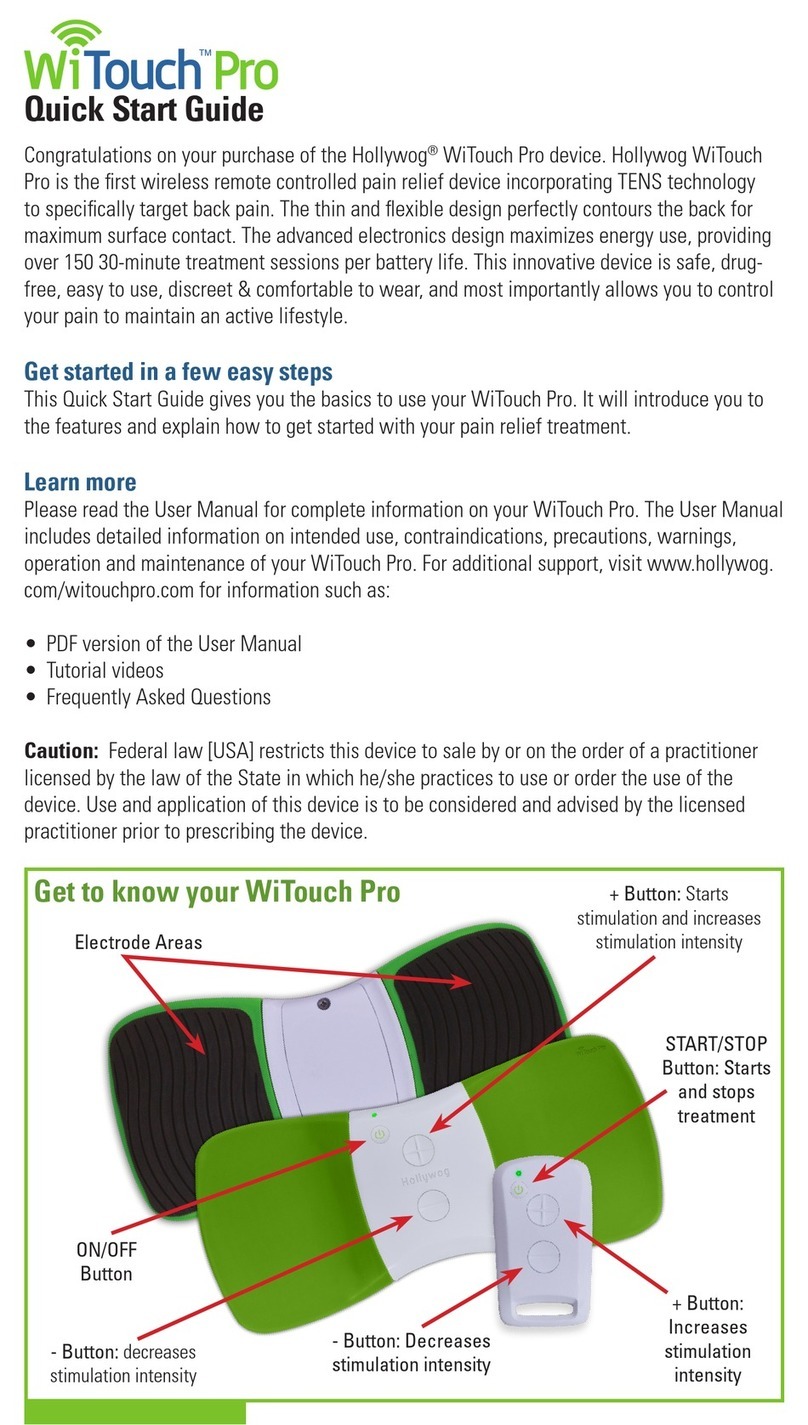
Hollywog
Hollywog WiTouch Pro quick start guide

Tempur-Pedic
Tempur-Pedic TEMPUR-Choice Supreme user guide
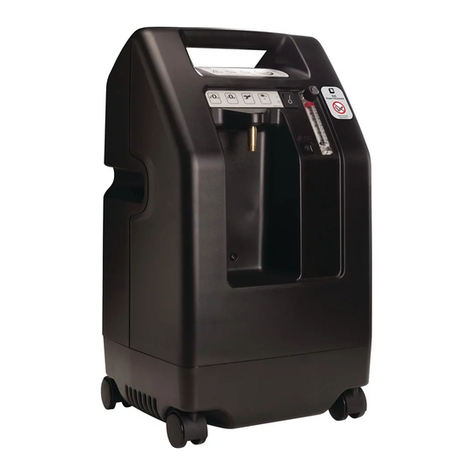
DeVilbiss
DeVilbiss 525DS Service manual
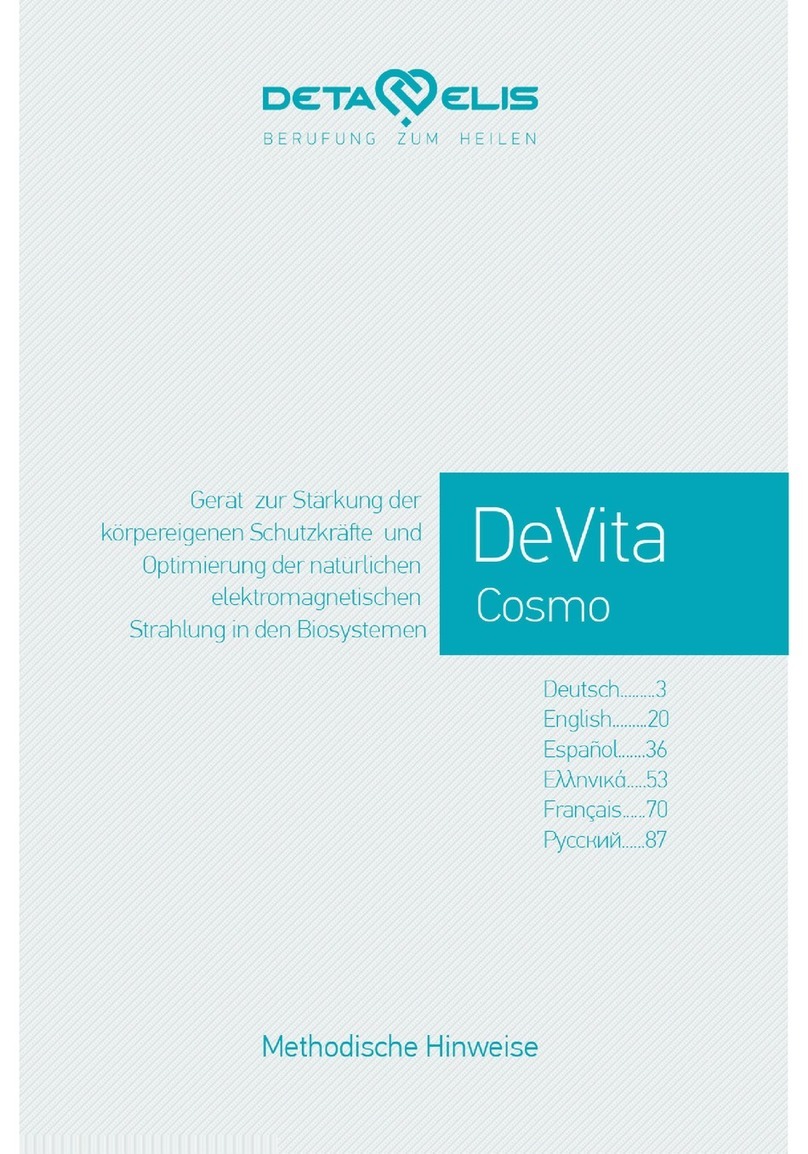
Deta-Elis
Deta-Elis DeVita-Cosmo user manual
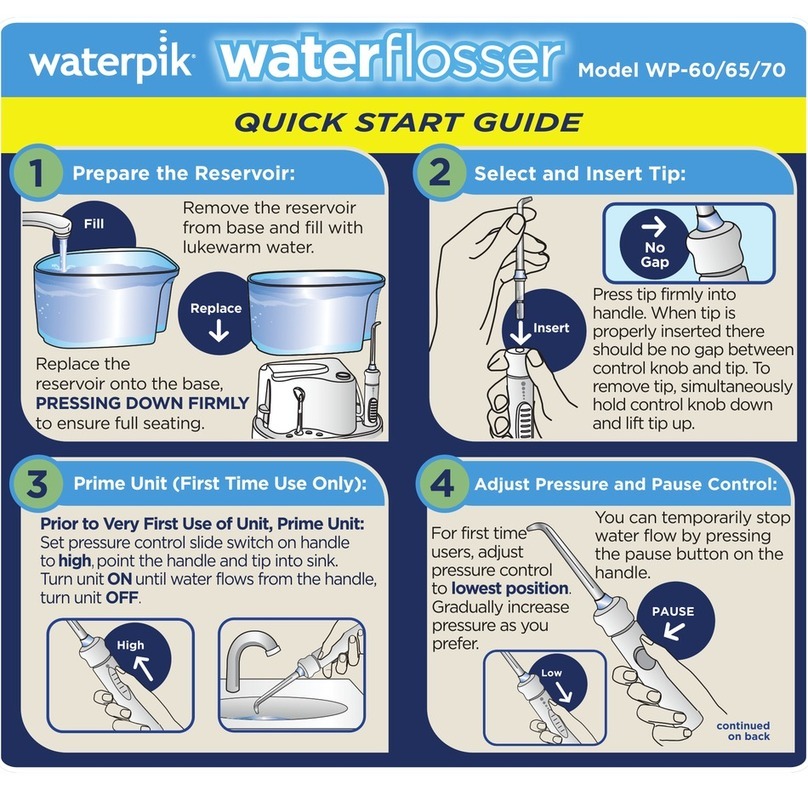
Waterpik Technologies
Waterpik Technologies WATERFLOSSER WP-60 quick start guide
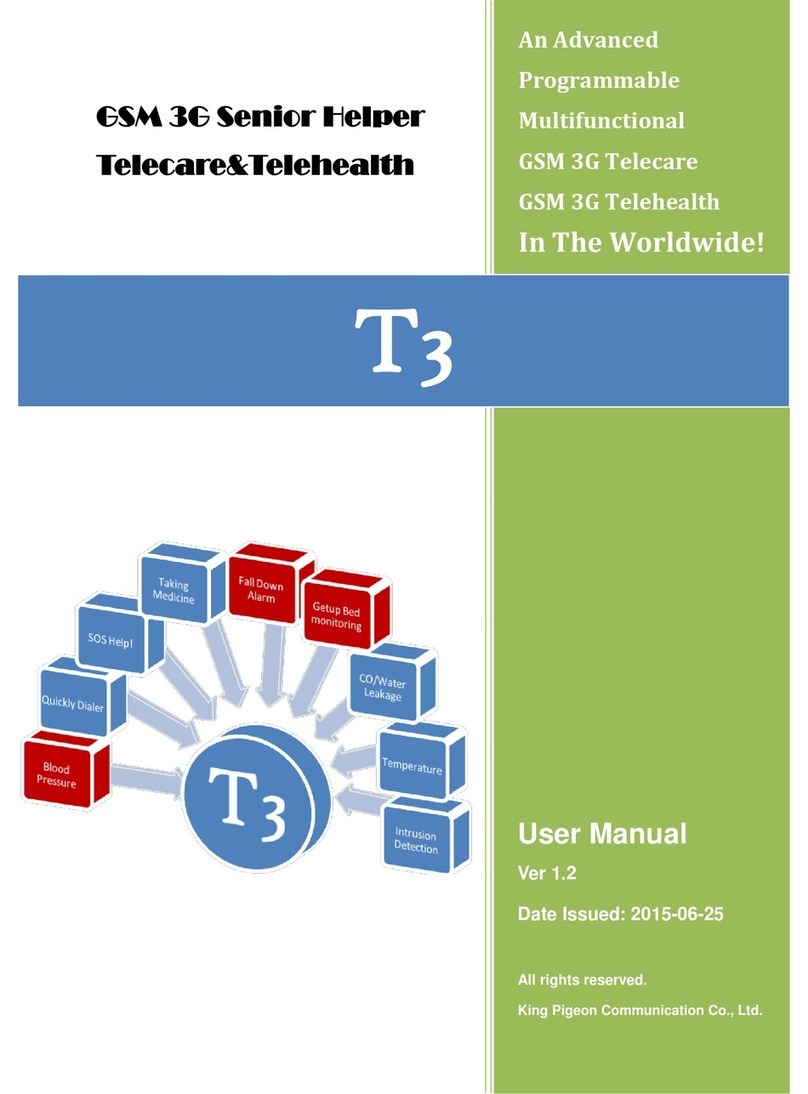
King Pigeon
King Pigeon T3 user manual


